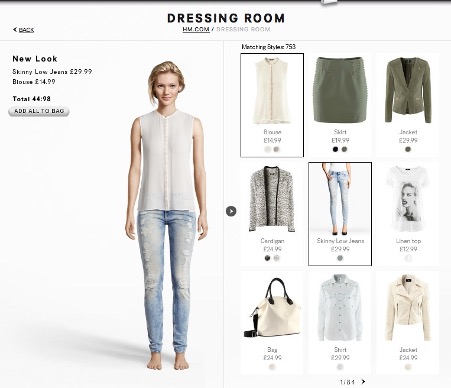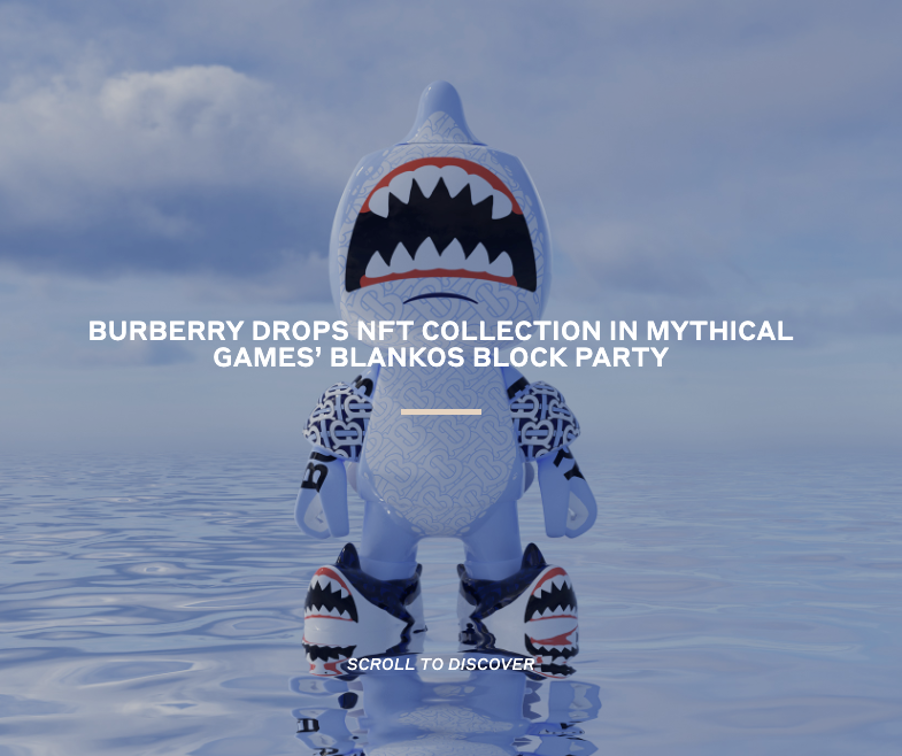From Gamified Gucci, to Burberry on the Blockchain I have a look at the retail’s latest channels and trends.
Last week at a swanky rooftop party at Pierstone, a Law office whose clients include Microsoft and other major tech companies, I met David and Michail CoFounders of Leepa that is distrupting the second-hand clothing market with an online environment that connects people and “gives new life to unused things”. We chatted for an hour or so as the sunset on the beautiful rooftops of Prague.


The next day off I went down the retail rabbit hole.
In this blog post, I took a look at some of the main changes and latest trends in the retail industry.These include omnichannel communication, pretailer companies, wearable computing, pop-up and experiential stores, smart shelves, voice commerce, virtual dressing rooms, and shopping in the metaverse.
According to Silicon Valley Bank’s research US online sales in 2021 reached over $200B representing 18% of all retail sales. Online shopping spiked 36%. However, in-person shopping continues to be a significant revenue driver with more new stores opening for the first time in five years.
And Statistica shows a predicted increase in online in the US to increase to 23.6% by 2025
Omnichannel communication is a term that refers to the ability to communicate with customers through multiple channels. Omnichannel retail includes not only physical retail stores and sonline experience, but also social media, fintech and payment facilitation, blockchain and beyond.
This trend is important because it allows businesses to reach more customers and create a more seamless customer experience.
Omnichannel Partnerships
Partnerships are crucial for many retailers to remain relevant amid rapid change. Partnerships connecting technology, and fintech with retail are shaping the way consumers interact with brands – both in person and online. For example, with Target and Pinterest people can take a picture of an item on their phone, do a search for it on Pinterest and find a similar one for sale on Target.com.
Pretailer companies are those that sell products before they are available to the general public. These companies allow customers to pre-order items so that they can be the first to receive them when they are released. This is a great way for businesses to generate buzz and interest around new products.
Pop-up and experiential stores are another trend that is gaining popularity. These types of stores are temporary, and they often offer unique experiences that customers can enjoy. This trend is popular because it allows businesses to reach new customers and create a more engaging shopping experience.
Voice commerce is a term that refers to the ability to purchase products using your voice. This is a growing trend because it is convenient and easy to use.
Smart shelves are a type of technology that is becoming more popular in the retail industry. This type of shelf is connected to the internet and can provide information about the products that are on it. This is a great way for businesses to provide more information to customers.
Virtual dressing rooms are another trend that is gaining popularity. This type of technology allows customers to try on clothes without actually having to try them on. This is a great way for businesses to save time and money.
At the end of 2021 a Forbes article predicted that the global virtual fitting room market will grow from $3 million in 2019 to $6.5 million by 2025. This due to convenience, increased loyalty and retention with virtual fitting rooms. Thirty-nine percent of retailers ranked the “ability to turn customer data into intelligent and actionable insight” as one of their greatest challenges, according to a SAP survey but according to the Chief Product Officer at Vue.ai, a company that builds AI products for Retail in the areas of Process Automation and Personalization their research show that
retailers have seen over 23% uplift in their average order value with AI-powered styling.With virtual dressing rooms, fashion retailers can harness an ocean of customer data that can enable them to better understand their shoppers.
”"ability to turn customer data into intelligent and actionable insight"
Julia K.DietmarChief Product Officer at Vue.ai
Like 3D fitting rooms, virtual shopping experiences in the metaverse, means using a VR (virtual reality) headset or AR (augmented reality) and other “immersive” technology to put yourself or your avatar into a virtual worlds. In short, it means putting shopping inside online gaming. And it’s worth noting that 81% of Gen-Z played video games in the past six months, averaging 7.3 hours per week and the global gaming industry grew rapidly in 2020 and is on track to be worth $219 billion by 2024. [McKinsey]
As consumers spend more time online and the hype around the metaverse continues to cascade into virtual goods, fashion leaders will unlock new ways of engaging with high-value younger cohorts. To capture untapped value streams, players should explore the potential of non-fungible tokens, gaming and virtual fashion — all of which offer fresh routes to creativity, community-building and commerce. McKinsey – Metaverse Mindset 2022
You can wander through virtual stores trying on or otherwise interacting with items. The advantage for retailers is being able to track customer activity, purchase history, preferences, and demographics to provide personalize recommendations and encourage purchases.
You can wander through virtual stores trying on or otherwise interacting with items. The advantage for retailers is being able to track customer activity, purchase history, preferences, and demographics to provide personalize recommendations and encourage purchases.
As consumers spend more time online and the hype around the metaverse continues to cascade into virtual goods, fashion leaders will unlock new ways of engaging with high value younger cohorts. To capture untapped value streams, players should explore the potential of nonfungible tokens, gaming, and virtual fashion — all of which offer fresh routes to creativity, community-building and commerce.
The State of Fashion 2022 Mckinsey.
Customers will be able to test drive a car, get a beauty consultation from a personal advisor, try glasses and see how all these things make them look and feel.
These are just a few of the latest trends in the retail industry. Keep these trends in mind as you plan for the future of your business! Thanks for reading.





